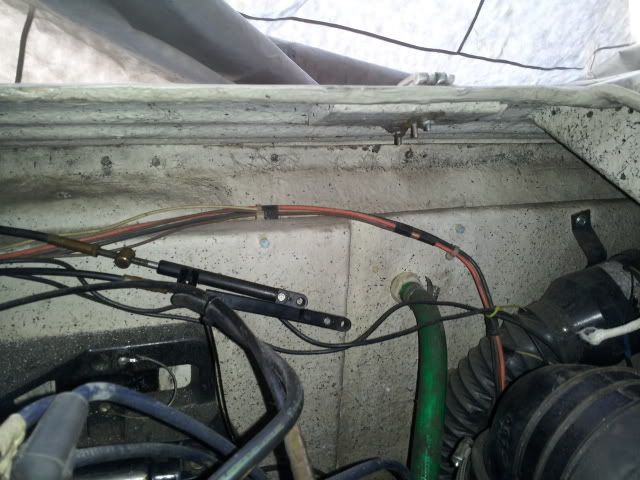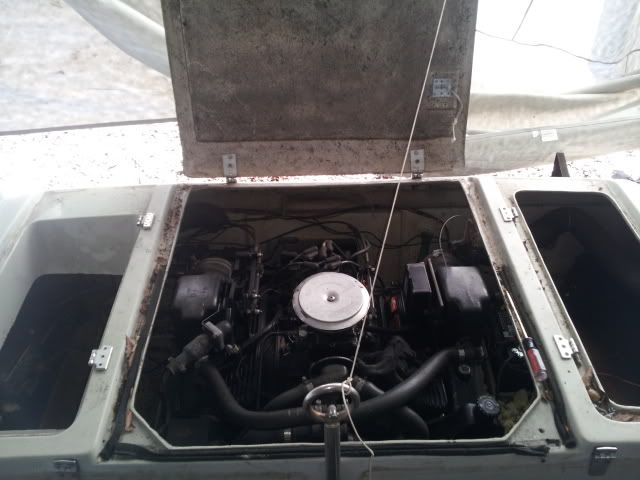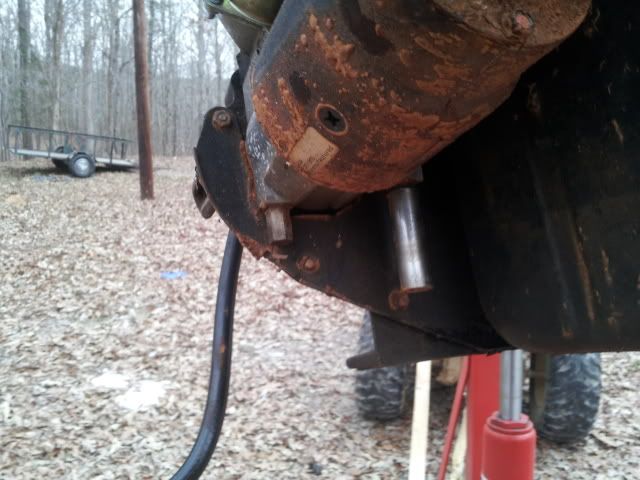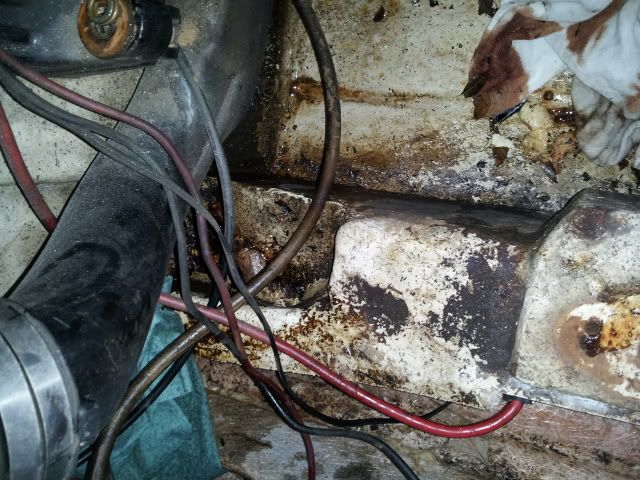Re: dixie hustler "deck job" (turned full rebuild)
Alrighty. I keep going back and forth, back and forth with this idea or that method or this material on my "plan". I feel like having a solid, decisive, documented plan for this job will be imperative to getting it done in a timely manner once I'm able to get to the nitty gritty. So here goes.
I will use arauco plywood which I can hopefully find at home depot for the transom, stringers, and floor. I want to lam the two sheets of plywood together with titebond 3 wood glue, and clamp and screw it until It dries. I want to coat the back of the transom (outer skin side) with epoxy for waterproofing, then coat the edges and face with one layer of csm (and resin of course) I then plan to liberally apply pl to the skin of the transom and trowel with a notch trowel, and clamp the pee out of it for 3 days or so while it dries. I want to use friscoboaters idea of cutting it away from the drain a bit and use pvc to extend the drain and fill in with pb. I plan to make my first batch or so of pb with equal parts cabosil, csm fibers, and resin, then adjust with succeeding batches to my liking?
After all is ready I'll tab the transom in with 8" csm. Next I will cover the transom with a layer of 1708, extending 3-4 inches past the csm tabbing. Lastly I will finish the transom with a layer of 1708, extending another 3-4 inches past the previous layer. After this all cures I will cut the keyhole, and drill all necessary holes, then coat the insides of the holes with epoxy for waterproofing. I may additionally squirt a shot of 5200 in all holes where a screw or bolt are going through.
A) Good for the transom? Missing anything?
Next I plan to move on to the stringers. These will also be arauco ply. I've played with the idea of the short 3" tall outer stringers being fir 2x material since they are so short. I'll probably cut everything else first, and if there is plenty of wood I'll make them ply. If not I will probably not go get another sheet of expensive ply for them. Jay recommended to me that tall stringers be ply, shorter ones can be lumber. But, I digress. I think, from looking, I can get my stringers, bulkheads, motor mounts, etc. all out in one piece. (not literally one whole piece, but sections) and I can use them as templates, so cutting the new ones should be easy.
I want to extend the existing bulkheads in front of and behind the fuel tank to span the entire width of the boat, and I'll use some pink foam to create templates for that and get them fit properly. I want to assemble the entire stringer/bulkhead/motor mount network inside the boat, and glue and nail it together with my brad nailer. I want to drill small, maybe 1" limber holes from each section into the next to the bilge.
I'll suspend all this 1/4" above the hull, and squirt liberal amounts of pl under the stringers, which will of course have to dry for 3 days or so. Now I will create a coved transition from stringers to hull with pb to make the glass easier to lay. First layer of glass for tabbing will be csm, from about an inch away from stringer's top to 3 inches or so onto the hull. Next will be a layer of 1708, down the sides and past the end of the csm. I won't have room to go another 3 or 4 inches past with each layer as with the transom, though. Now another layer of csm. Then another overlapping layer of 1708. Tear/stretch some csm to make it conform better, and cap the stringers with a layer of the csm. Once all cured, I will glue a painted or perhaps epoxied ( $

) cleat 2x2 to each stringer with pl. This will be for screwing the deck to so I don't have stringers rot if I don't have a screw hole sealed well enough somewhere.
B) Good for the stringers? Miss anything? I'm trying to type this up without referring back to references, to see if I have indeed learned my processes in theory so I can more quickly go through my steps.
Here is where I may be thinking too much. If you look, near the bottom of that shelf running along my hull, where the old floor met it and was tabbed onto it, there is about a half-three quarter inch gap between the bottom of that foam shelf and the hull as it slopes up. I have been thinking about coating a small 3" wide length of plywood with a layer of csm, and pl gluing it to the hull, running right along the bottom of that "shelf", right below where the deck will rest. Maybe even tab this to the hull/shelf bottom with a layer of 1708. When the deck goes down, I can glue the ply to this strip, and it will support the edges of the deck and give me a place to screw the edges to also.
C) Not needed? Or problematic?
I must remember to seal all limber holes I drilled with epoxy before this next step. Now it's time to foam. Pretty straightforward. I may use the false deck method, and just weight the false deck. That way if I pour too much foam, I think the false deck would rise before my hull distorted. This leaves the foam more waterproof because I won't be shaving so much of it off the top. Once all foamed I want to take a router with a half inch wide/deep bit and create grooves in the foam for the water that will never get in because I will do such a good job and take such good care of the boat to flow on top of the foam and to the bilge. Going through the stringers where needed. I want to use epoxy to paint about a 6" wide strip over the stringers and bulkheads, because I can trust it to seal the stringers best if my csm cap isn't the best and where I have cut through them. Then I will paint over the rest of the top of the foam (not over where I epoxied) with the recemmended paint for waterproofing the foam. Juuuuuuust in case.
Next up is the deck. The deck will be measured and templated with pink sheet foam, then cut out in arauco ply and test fitted just to be sure. Once good to go with the fitment I will coat the underside with ONE (?) coat of epoxy, and the edges at least where the joints in the deck will be. But I'm thinking the outside edges also. Where it won't be visible I think I may use pl for filleting, so I'll want those edges to be sealed. I'll run a bead over the top of my stringers AND cleats of pl, place my deck pieces, and screw to my cleats. I'll run each screw in, back it out, squirt 5200, then replace the screw.
D) How far apart should I put the screws? They are basically for holding it till the pl sets so I'm thinking not really that many?
After the pl has cured, I'll create my fillets where visible with pb. If I've gotten good with pb by then I may do it all with pb. Up front under the seats and in the rear, though, I may just use pl. Once all dried and set up, I will tab all around with one layer of 8" 1708. Next up will be a layer of csm, overlapping the first by about 2 " ( this is about all I'll have room to go past). I also need to remember to tab the deck down into the bilge area under the motor. Then I will lay a layer of 1708, overlapping the previous as much as I have room for. Finishing up I will lay a layer of csm over the deck.
E)Sound good? I'm assuming where I stop a section of matt/cloth and start a new, I overlap about 3"? Should I stagger the overlaps somehow so that I don't get so much buildup in one spot?
I want to reuse my seat bases, as there was nothing wrong with them. It was just three 8" squares of plywood glued together. I'll sand it up to make it a little purdier, and epoxy it if there is any left. Then I'll glue them to the deck. I also just wanna glue slabs of wood to the deck in the motor compartment for the battery and trim pump. No screws into my deck! Ever!
I want to gelcoat it with an off white, so I'm assuming hit the whole deck up with maybe a 120 then a 180 sandpaper with a hand sander, then clean acetone and gel?
I feel like I'm forgetting something, but I can't think of anything. I don't plan to leave any accesses to the tank. If I ever have problems with it I know where it is. I'll cut it out then repair when I'm done with whatever needs doing.
gotta go...didn't have time to finish the post...edit it tonight and finish up :/
























